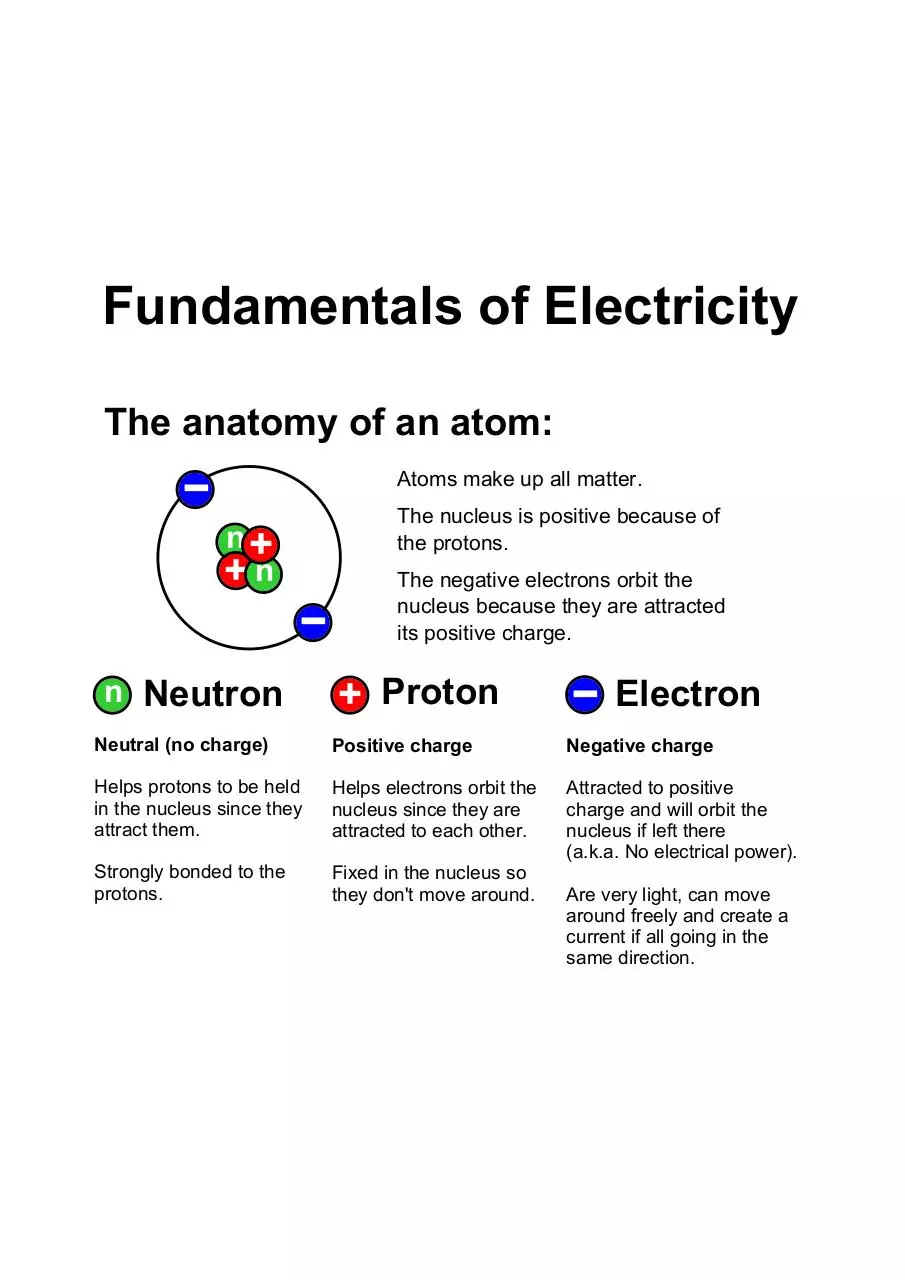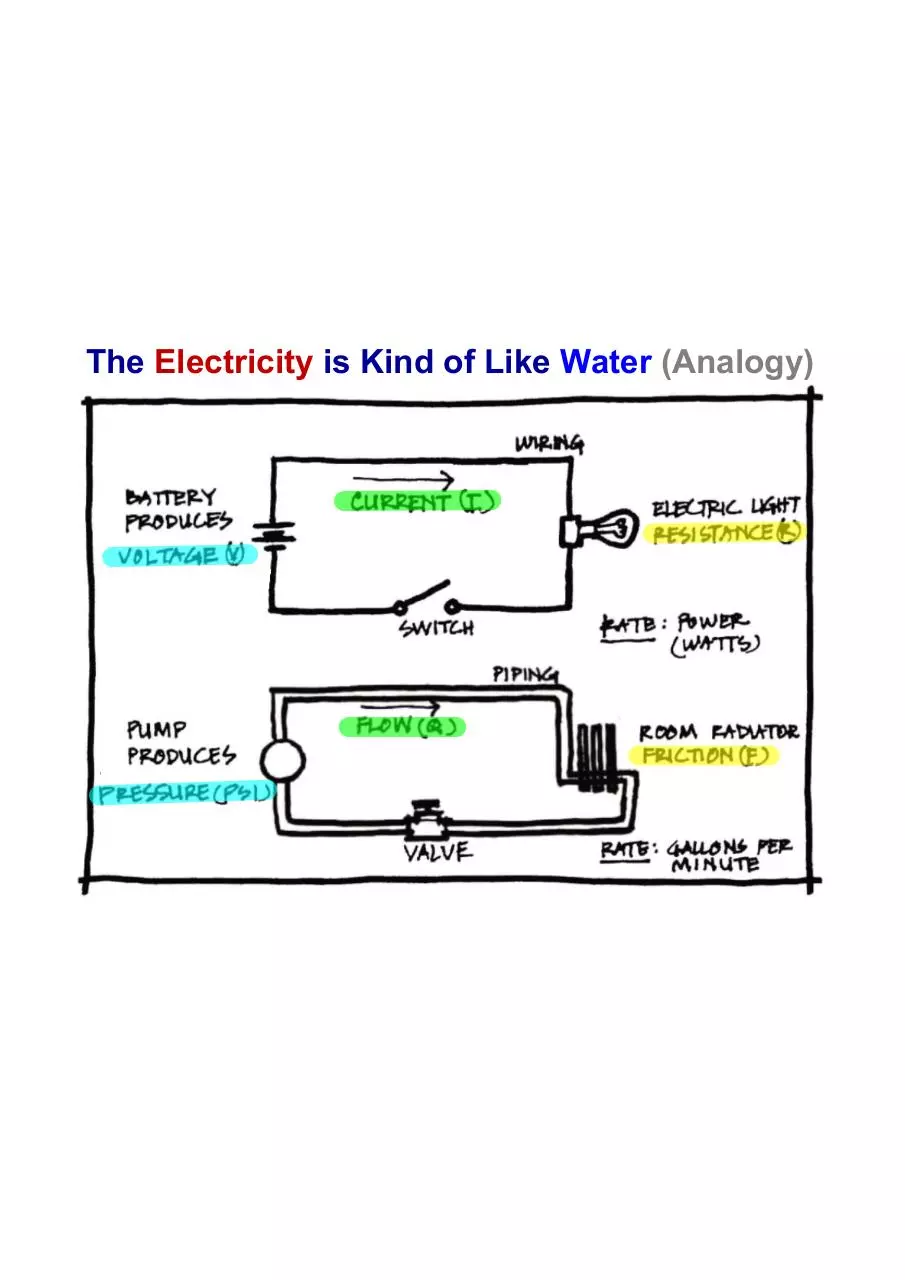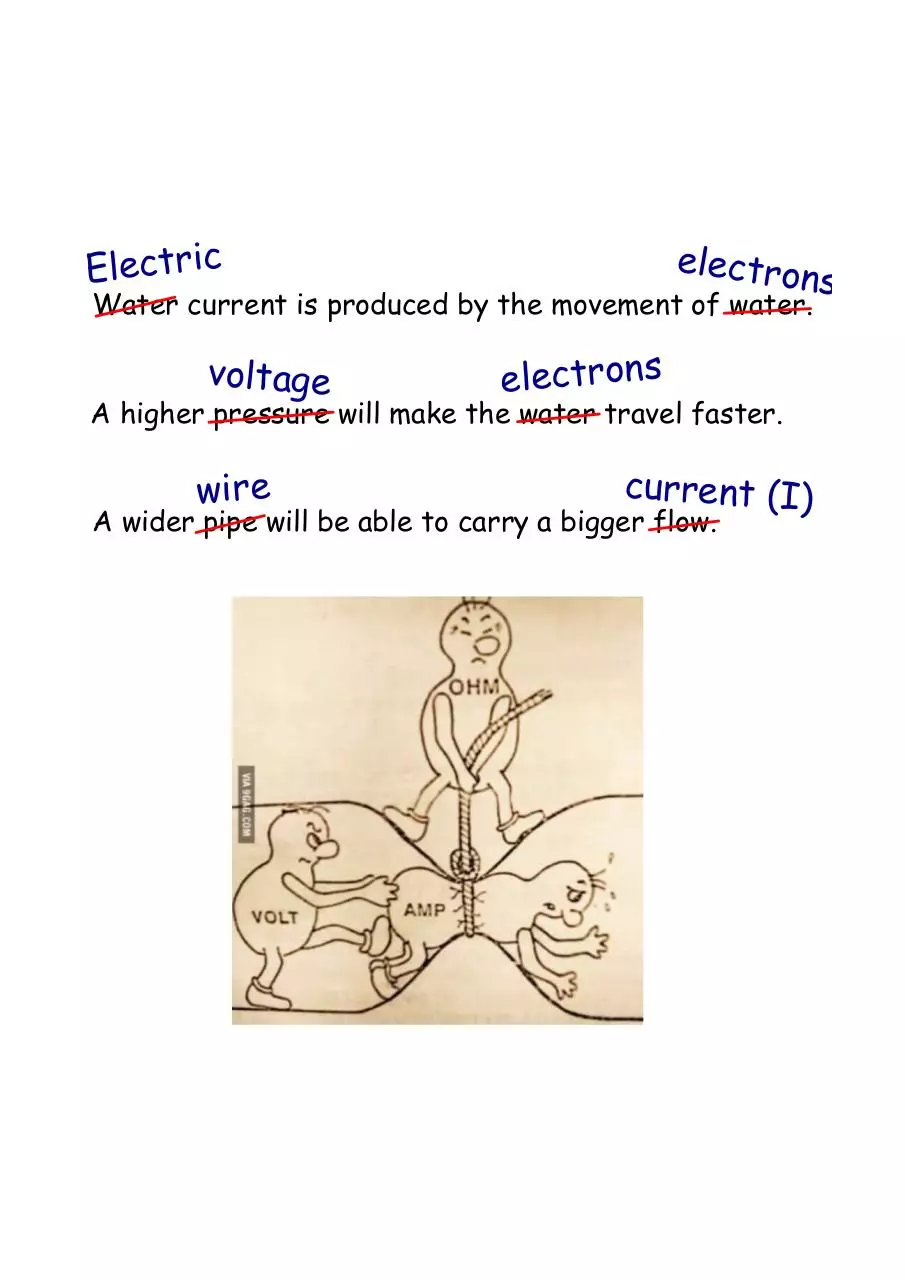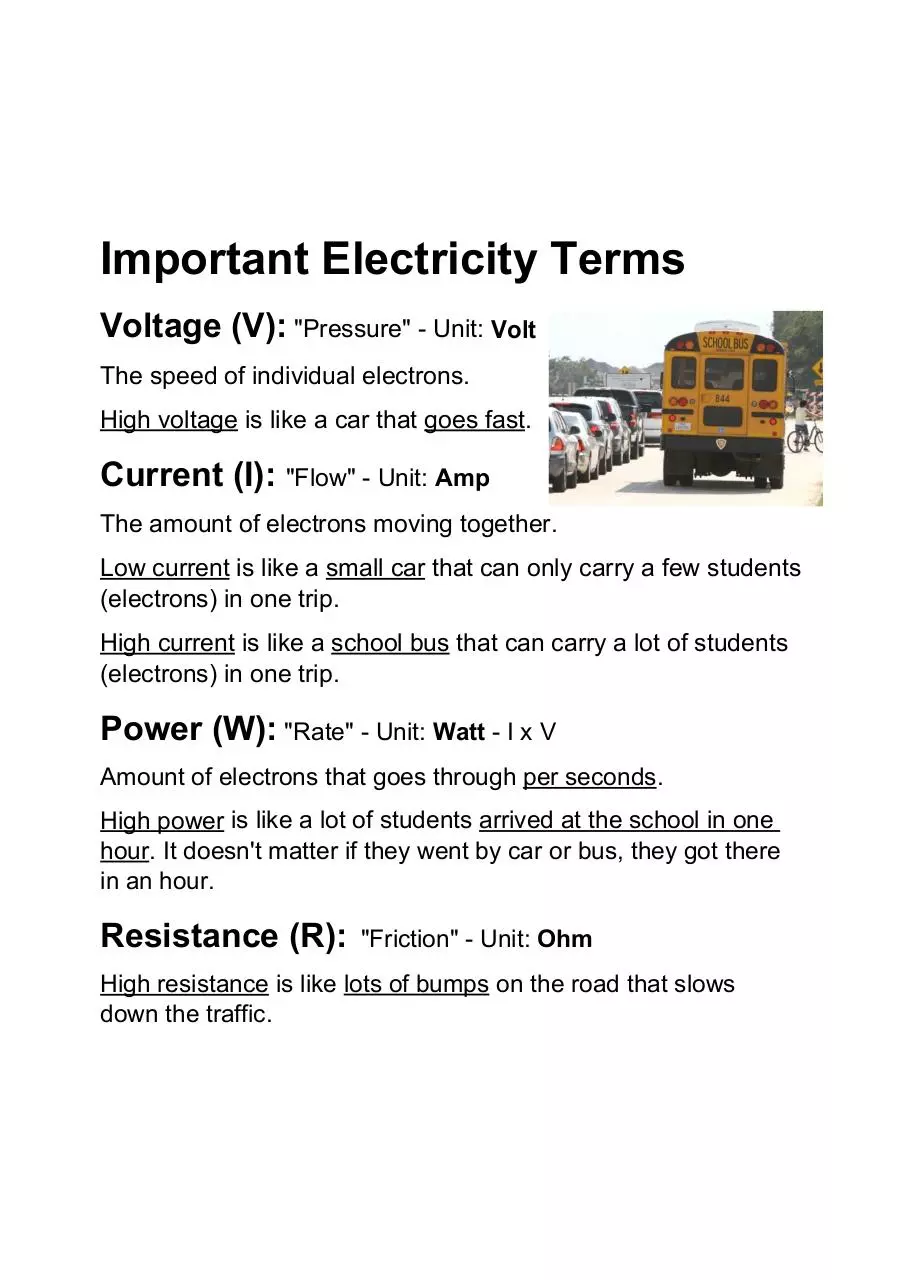Fundamentals of Electricity (PDF)
File information
Title: Untitled
This PDF 1.4 document has been generated by SMART Notebook / PDFlib 5.0.4 (C++/Win32), and has been sent on pdf-archive.com on 18/09/2017 at 19:17, from IP address 204.81.x.x.
The current document download page has been viewed 613 times.
File size: 23.14 MB (13 pages).
Privacy: public file





File preview
Fundamentals of Electricity
The anatomy of an atom:
_
Atoms make up all matter.
n+
+n
The nucleus is positive because of
the protons.
_
n Neutron
The negative electrons orbit the
nucleus because they are attracted
its positive charge.
+ Proton
_ Electron
Neutral (no charge)
Positive charge
Negative charge
Helps protons to be held
in the nucleus since they
attract them.
Helps electrons orbit the
nucleus since they are
attracted to each other.
Attracted to positive
charge and will orbit the
nucleus if left there
(a.k.a. No electrical power).
Strongly bonded to the
protons.
Fixed in the nucleus so
they don't move around.
Are very light, can move
around freely and create a
current if all going in the
same direction.
Conductivity:
Insulator Conductor
_
_
n+
+n
_
n+
+n
_
_
Under electricity, the electrons will
stay in orbit around the nucleus.
Cannot generate a current.
glass
rubber
oil
asphalt
fiberglass
porcelain
ceramic
quartz
(dry) cotton
(dry) paper
(dry) wood
plastic
air
diamond
pure water
n+
+n
_
_
_
n+
+n
n+
+n
_
Positive
n+
+n
Negative
_
Positive
Negative
_
_
Under electricity, the electrons will
be free and will all flow in one
direction. This generates a current.
brass
silver
copper
bronze
gold
mercury
aluminum
graphite
iron
dirty water
steel
concrete
The Electricity is Kind of Like Water (Analogy)
Electric
electro
ns
Water current is produced by the movement of water.
voltage
electrons
A higher pressure will make the water travel faster.
wire
current (I)
A wider pipe will be able to carry a bigger flow.
Important Electricity Terms
Voltage (V): "Pressure" Unit: Volt
The speed of individual electrons.
High voltage is like a car that goes fast.
Current (I): "Flow" Unit: Amp
The amount of electrons moving together.
Low current is like a small car that can only carry a few students
(electrons) in one trip.
High current is like a school bus that can carry a lot of students
(electrons) in one trip.
Power (W): "Rate" Unit: Watt I x V
Amount of electrons that goes through per seconds.
High power is like a lot of students arrived at the school in one
hour. It doesn't matter if they went by car or bus, they got there
in an hour.
Resistance (R): "Friction" Unit: Ohm
High resistance is like lots of bumps on the road that slows
down the traffic.
Law of Electric Charges:
Will be applied to electrons (negative) since that's we care for in electricity.
_
+
n
_
Negative attracted to positive
(Opposite charges attract)
Negative attracted to neutral*
(Opposite charges attract)
*induced neutral not a "neutron"
_
_
Negatives repel each other
(Like charges repel)
Electric charge of objects:
Depending on the number of electrons of an object have will determine its
electrical charge.
For example:
A balloon rubbed on hair will be negatively charged and will stick to the neutral wall while
the hairs are left positive.
One terminal on a cell or battery is negative and the other is positive.
Positive#
Neutral
Negative
#p > #e
#p = #e
#p < #e
+
_
+
+
+
_
+_ +_
+ _+
_ _ _
_+ _ +_
_+ _ + _
Lack of electrons
Naturally balanced
Extra electrons
It craves to gain
All + and will cancel
Electrons repel
electrons
and want to escape
Direct Current (DC)
e
Used in most electronics.
+
Life
+
_
_
+_
_
100% + _
+
The electrons flow from one negative
terminal all to way to the positive
terminal.
I
So the flow of electrons (e) is from
negative to positive.
+
Current ( ) is the orientation
I
of the positive charge.
_
+
_ I
+_
e
This is the opposite to the
conventional current orientation ( )
I
that has been arbitrarily* decided to
go from positive to negative. That
conventional orientation is used to
analyze circuits.
*like rules in a game
Direct Current (DC)
e
Used in most electronics.
Life
+ _+
+
The electrons flow from one negative
terminal all to way to the positive
terminal.
I
So the flow of electrons (e) is from
negative to positive.
+
Current ( ) is the orientation
I
of the positive charge.
_
_+ _ +_
I
78% + _ + _
_
e
This is the opposite to the
conventional current orientation ( )
I
that has been arbitrarily* decided to
go from positive to negative. That
conventional orientation is used to
analyze circuits.
*like rules in a game
Download Fundamentals of Electricity
Fundamentals of Electricity.pdf (PDF, 23.14 MB)
Download PDF
Share this file on social networks
Link to this page
Permanent link
Use the permanent link to the download page to share your document on Facebook, Twitter, LinkedIn, or directly with a contact by e-Mail, Messenger, Whatsapp, Line..
Short link
Use the short link to share your document on Twitter or by text message (SMS)
HTML Code
Copy the following HTML code to share your document on a Website or Blog
QR Code to this page

This file has been shared publicly by a user of PDF Archive.
Document ID: 0000674951.